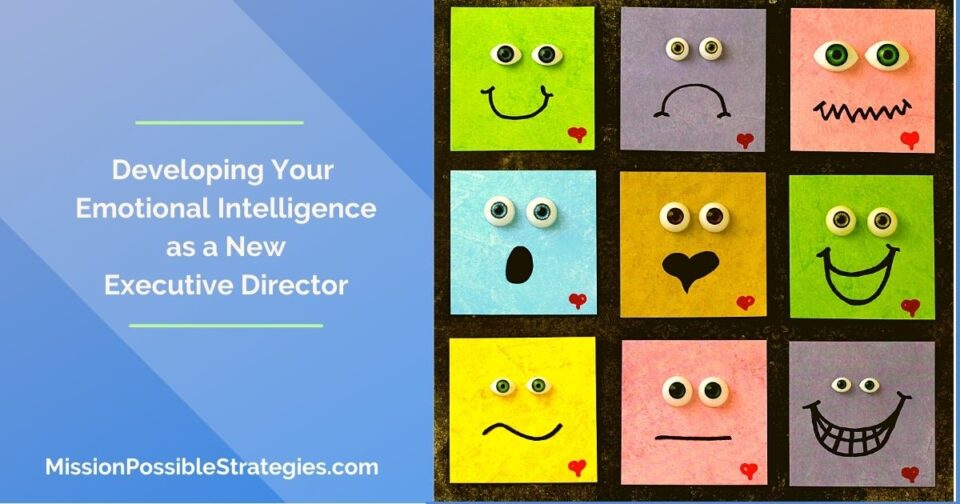In a previous post, we talked about the six influencers which can affect stress and energy. If you haven’t read the post yet, please click here. In this post, we’re discussing the Emotional Influencer and its 3 components: emotional awareness, emotional expression, and emotional control. Understanding these concepts can increase your emotional intelligence and improve your performance as a leader.
Emotional Awareness:
Awareness of your own and others’ feelings leads to greater interpersonal effectiveness, increased personal satisfaction, enhanced relationships, and better performance in all areas of life. Think of emotions as clues to get you to pay attention to what is happening in your life.
Creating emotional awareness can be as simple as checking in with yourself throughout the day. Instead of asking yourself “How am I feeling?” ask yourself “What am I feeling?” Then, ask yourself, “What thought created this emotional response?” Keeping an emotions journal is a good way to become more aware of your emotions.
Most emotions are caused by interpretations of what is happening around you. For example, if a staff member walks in late to a meeting and you get upset, you might be making some kind of interpretation like, “Bob is always late because he doesn’t respect me.”
Understanding what triggers you is an important part of emotional awareness, especially when it comes to people at the office who “push your buttons.” Remember: no one can push a button that isn’t already there.
If you feel triggered by another person’s actions, follow these steps:
- Stop.
- Breathe.
- Ask yourself:
- What story am I telling myself that’s causing me to be upset?
- What else may really be going on here? (Maybe Bob’s just really disorganized!)
If you notice a pattern of being triggered, explore the following question: “Why do I allow myself to get upset by things that I know will happen?” By understanding your triggers, you can create an action plan to better deal with the situation in the future.
Emotional Understanding
Everything we experience in life has a purpose, including emotions. Emotions are neither good nor bad, only signals for you to notice and act upon.
Think of emotions as FLAGS. This acronym stands for the 5 core emotions: Fear, Love, Anger Guilt, and Sadness.
- FEAR is born out of self-protection. You fear losing what you value.
- LOVE is life’s most powerful emotion. Though many leaders are reluctant to speak about love, it is everyone’s deepest driving force.
- ANGER is born out of the belief that there is a threat to you or someone or something you love.
- GUILT helps you decide who you are and who you want to be.
- SADNESS can occur when you have lost something, including a dream or hope. Sadness reminds you to appreciate the gifts of life.
Think about how and when the 5 core emotions show up for you at work. What are they trying to tell you? What is their message? The goal is to understand which emotions help and which don’t.
Emotional Expression
Being aware of what you’re feeling is the first step, but you must pay attention to your emotional expression as well. How do you express your emotions as a leader? Do you wear your feelings on your sleeve? Or are you a closed book?
We are often taught as children not to express our emotions. I think we confuse the expression of emotions with the inappropriate behavior that can accompany expressing emotions. Someone can be highly expressive and either appropriate or inappropriate.
Emotional stress occurs when you don’t know how to express your emotions effectively or appropriately. Increased stress lowers your energy which adversely affects leadership performance.
What are some inappropriate ways to express emotions at the office? Slamming doors, rolling eyes, and raising one’s voice come to mind. These behaviors are highly expressive but inappropriate.
Increasing emotional awareness and knowing how to express emotions appropriately can decrease stress, increase energy, and improve performance.
How does the way you express your emotions affect your leadership performance?
Shifting Emotions
We’ve discussed emotional awareness, emotional understanding, and emotional expression. Now I’d like to discuss shifting your emotions.
There’s a new show on Apple TV called “Severance.” The characters willingly go through a medical procedure so they can’t recall their personal memories at work or recall their work-related memories when they get home. That’s an extreme case of “leaving your work at the office!”
But seriously, it’s important to know how to take an emotional break from work when you get home. How do you shift your energy after a long day? What works for you? Music? Meditation? Exercise? Yoga?
Meditation and yoga have never worked for me. They actually make me more tense. What works for me? Listening to the cello, a cup of hot tea, and writing in my journal. Or watching Seinfeld!
Be in touch with what works for you and don’t neglect yourself in this area, no matter how busy you are. I think this is the No. 1 mistake new executive directors make. I made it too.
Summary: Emotional intelligence affects your leadership performance. Be sure to understand your emotions and learn to express them appropriately at work.
And Remember…You’re not alone. You can do this!
The information in this blog post is based on the work of Bruce D. Schneider of the Institute of Professional Excellence in Coaching.


